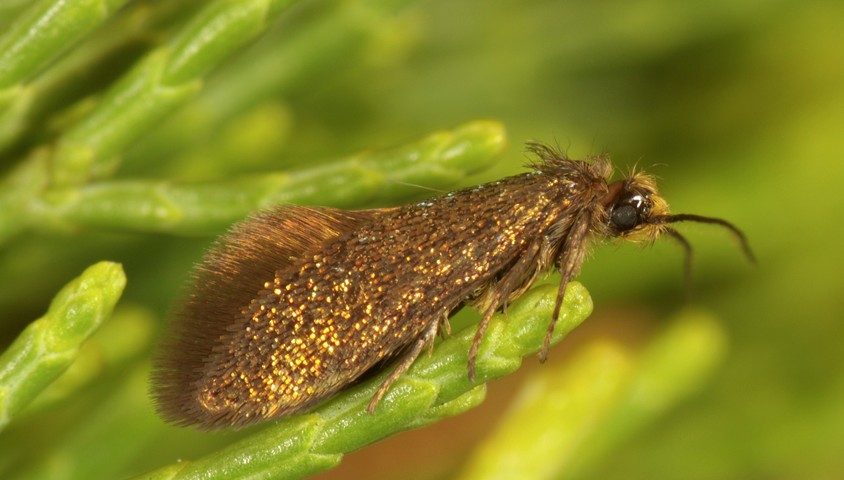A new species of moth has been discovered on Kangaroo Island after a local man decided to perform a simple survey of insects on his property.
Richard Glatz was sweeping bushed on his block with a basic insect net when he trapped a tiny moth and, when he wasn’t able to identify it, he enlisted the help of an expert in such species.
Dr Ted Edwards, an honorary fellow with the CSIRO Australian National Insect Collection, received the specimen and recognised it as being unique.

Volunteer researchers Richard Glatz and Axel Kallies survey for enigma moth specimens. Photo: Marianne Horak, CSIRO.
“As a wasp person, Richard had chosen to sweep the bushes with a net when someone hoping to find moths would usually run lights in the evening,” Edwards explained. “This moth doesn’t come to light and therefore could only have been trapped using the method Richard employed.”
The moth, now identified as Aenigmatinea glatzella, was named after Richard Glatz.
Because it is the end of a line of moths which branched off from other moths perhaps 80-100 million years ago, it is referred to referred to as a living fossil – the first primitive moth species to be discovered since the 1970s worldwide.
Not only had its behaviour made it difficult to discover, the moth also isn’t particularly large at just 10mm long.
But, Edwards stressed, there are plenty of other species yet to be identified by science, and it’s crucial that we continue to catalogue them.
“The benefits of discovering and naming new species are manifold,” he said. “Because we know so little about moths many ecological management projects are ill conceived.
“Take ‘control’ burning as an example. Moths are a very important part of dry leaf litter breakdown in Australia, but because we know so little, natural processes are ignored and control burning kills the natural recyclers of litter, exacerbating the litter problem.”
There is an estimated total of around 22,000 species of moths and butterflies that call Australia home, yet science has only identified about half of these.
The enigma moth was unveiled today as part of a foundation launch designed to support research into Australian moths and butterflies.



